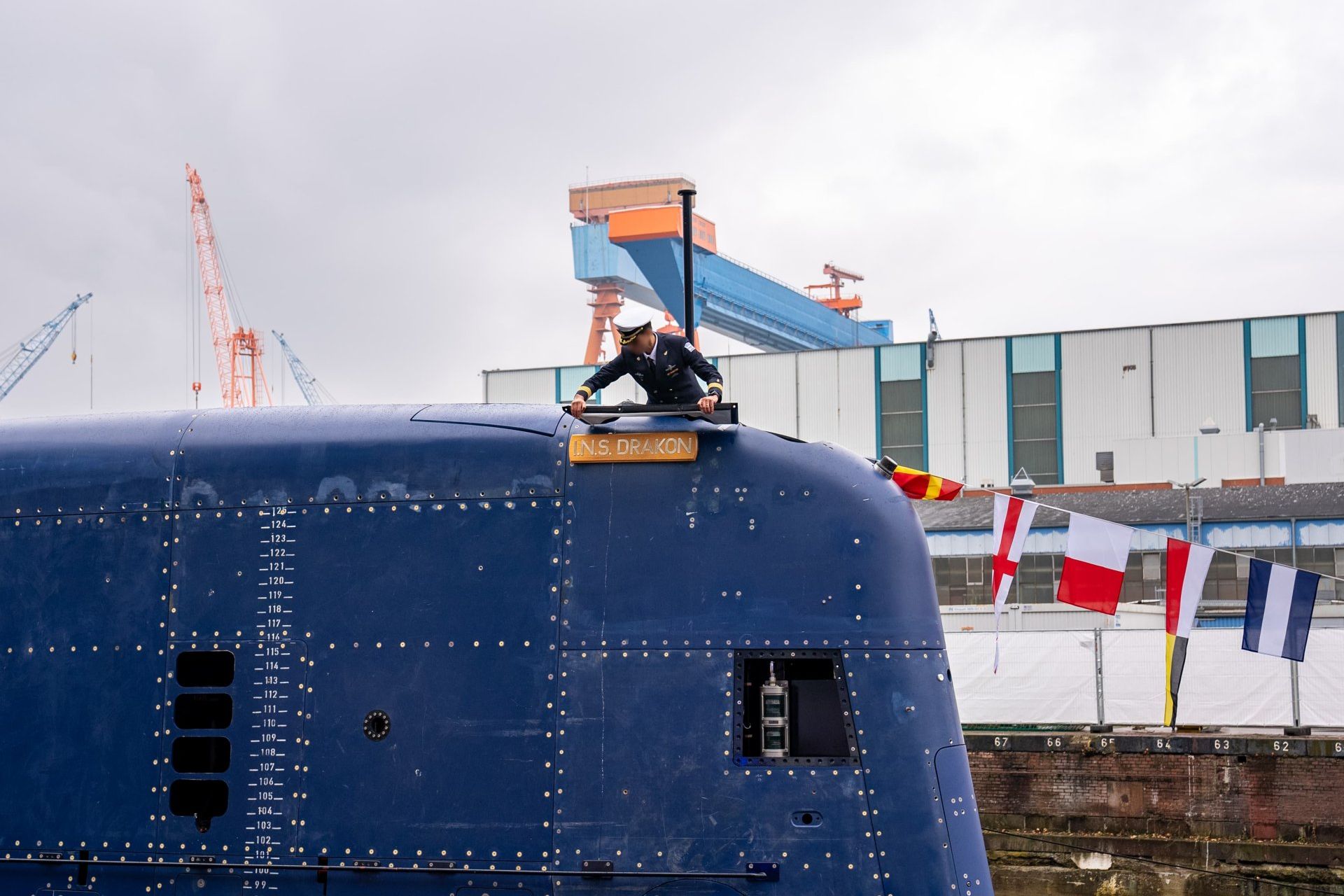Breaking News
Dolphin-II class submarine INS Drakon Joins Israeli Navy to Counter Regional Threats.
According to in formation published by the Israeli MoD on November 12, 2024, the Israeli Defense Forces (IDF) has unveiled its sixth submarine, INS Drakon, a Dolphin AIP-class vessel designed as a strategic asset. The naming ceremony took place at the Kiel shipyard in Germany, with senior leaders, including the Israeli Navy Commander in Chief, top officials from the Israel Ministry of Defense, and Israel’s Ambassador to Germany. The submarine is expected to join Israel’s fleet in 2025.
Follow Army Recognition on Google News at this link

Israeli Dolphin-II class submarine INS Drakon in Kiel, Germany. (Picture source: Israeli MoD)
Compared to their predecessors, Dolphin-II submarines are larger, measuring approximately 68.6 meters (225 feet) in length and displacing around 2,400 tons when submerged. This increase in size accommodates an air-independent propulsion (AIP) system, enabling the submarines to remain submerged for extended periods without surfacing, thereby enhancing their stealth and operational endurance.
The propulsion system combines traditional diesel-electric mechanisms with AIP technology, allowing for greater underwater endurance and reduced acoustic signatures. The submarines are capable of speeds exceeding 25 knots (46 km/h) and can operate at depths of at least 350 meters (1,150 feet).
Dolphin-II submarines are equipped with ten torpedo tubes: six standard 533 mm (21-inch) and four larger 650 mm (26-inch) tubes. This configuration allows them to deploy a variety of munitions, including DM-2A4 Seehake wire-guided torpedoes and UGM-84C Harpoon anti-ship missiles. The larger tubes are also believed to be capable of launching submarine-launched cruise missiles (SLCMs), potentially providing Israel with a sea-based second-strike nuclear capability.
The first two Dolphin-II submarines, INS Tanin and INS Rahav, were ordered in 2006, launched in 2012 and 2013, and entered service in 2014 and 2016, respectively. A third submarine, INS Drakon, was launched in 2017 and is expected to enter service in the near future. Notably, INS Drakon features a lengthened sail, speculated to contain a unique vertical launch system (VLS) for expanded missile capabilities.
In a conflict with Iran, Israel's Dolphin-II class submarines could serve as a pivotal strategic asset, leveraging their stealth, advanced weaponry, and extended underwater endurance. These submarines, equipped with air-independent propulsion systems, can remain submerged for prolonged periods, allowing them to approach Iranian waters covertly.
Their reputed ability to launch submarine-launched cruise missiles could provide Israel with a crucial second-strike capability, especially if equipped with nuclear warheads. This capacity not only strengthens deterrence but also ensures that Israel can respond to any strategic strikes from Iran, securing its defensive posture even under escalated threats.
Additionally, the Dolphin-II’s potential to launch precision-guided missiles allows Israel to target high-value sites deep within Iranian territory, such as missile installations, command centers, and critical infrastructure, bypassing air defenses and delivering strikes with an element of surprise.


























